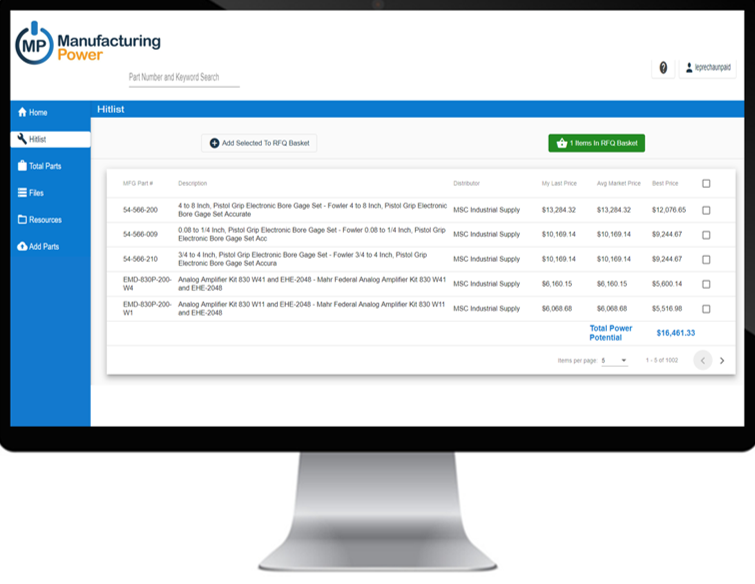
Automation Drives COGS Reduction for Small and Mid-sized Manufacturers
By Mike Franz, founder and creator of the WorkCenter from ManufacturingPower
Automated access to summary cost and margin information for each SKU delivers light SaaS “MRO/tail-spend” price transparency, returning a minimum 11-14 COGS (cost of goods sold) reduction to the bottom line.
Every manufacturer must pay attention to costs and competitors’ pricing. For better or worse, purchasing professionals are rewarded for capturing the lowest price; few have the time to scour the internet for ever RFQ to see if the bid offered is indeed competitive. Measuring value with price experiments is not realistic.
Full-time competitive pricing professionals could work 24/7 to generate statistically valid and accurate data. For the small and mid-sized manufacturer, the solution is to automate price comparison functionality. Until recently this was prohibitively expensive and often too complex. Automating costs and competitive prices can be achieved in a $5,000 per year SaaS solution.
Outsourcing data collection is mandated because of rapidly changing prices. Whether due to tariffs, international competition, spikes in oil causing much higher delivery costs, the monitoring of competitors’ costs simply takes too much time and effort without automation.
ManufacturingPower collects competitive prices from sites and marketplaces like Amazon, Google Shopping, Grainger, and eBay in real-time.
Automated price scraping
Realizing the need for automated price-setting, developers began marketing price scraping software and setting consumer cost for products. Scraping programs automatically retrieve competitors’ pricing and product information. The scraped data can be posted to an e-commerce site in real-time.
By automating this process, scraping must be tailored to provide the critical analysis and manual adjustments required. Automated solutions introduce a scientific technology combining big data and cloud technology to set price points for even the smallest manufacturers.
Automatic and real-time monitoring
Powerful analytic tools help forecast optimum pricing in advance. Small manufacturers set the best price; this may not be necessarily the lowest price for each customer. Dynamic pricing can look to big data to provide information that affects purchasing strategies.
Beyond competitors’ prices, market trends affect sales including geographic location and supply chain issues.
Automating product costing is central to the critical decisions made daily by small and mid-sized manufacturers. Decisions about the products manufactured, the prices charged, and the tactics implemented to improve the processes, make or break the company’s profitability.
Only with a cloud-based application designed to quickly calculate, analyze, share, and maintain detailed, accurate, and actionable product costs, can spreadsheets be eliminated as the methodology for price comparisons. Only when manufacturers stop basing critical business decisions on inadequate spreadsheets can the purchasing department succeed.

About the author: Mike Franz is the founder and creator of the WorkCenter from ManufacturingPower, a cloud-based market intelligence solution designed to help small to mid-sized companies streamline and achieve real-time visibility into Industrial Supply spend, collaborate better with suppliers, mitigate risk, and realize significant cost savings.
